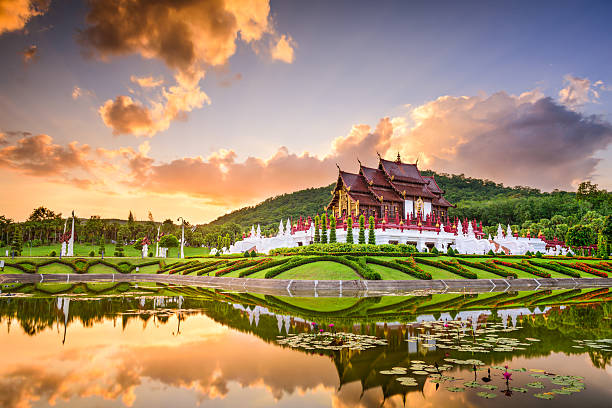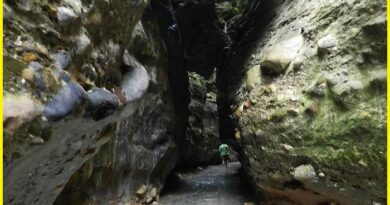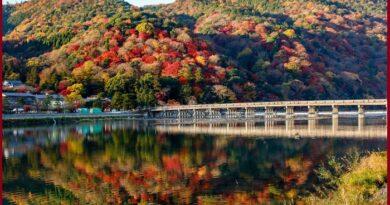Chiang Mai Adventures: Best Activities and Attractions
Chiang Mai
Chiang Mai, often referred to as the “Rose of the North,” is a city in northern Thailand known for its rich history, vibrant culture, and beautiful natural surroundings. Chiang Mai is home to numerous ancient temples (wats) that showcase traditional Lanna Thai architecture. Key temples include Wat Phra That Doi Suthep, Wat Chedi Luang, and Wat Phra Singh. The historic center of Chiang Mai is surrounded by ancient walls and moats. It’s a charming area to explore on foot, where you’ll find traditional wooden houses, quaint cafes, and lively markets. Surrounding Chiang Mai are lush mountains and forests, offering opportunities for trekking, zip-lining, and visiting waterfalls. Doi Inthanon National Park, Thailand’s highest peak, is a popular destination for nature lovers.
Chiang Mai what to do
Chiang Mai, located in northern Thailand, offers a rich cultural experience with plenty of activities to explore. Here are some things you can do in Chiang Mai-
1. Visit Temples
2. Explore Old City
Exploring the Old City of Chiang Mai is a delightful experience, offering a glimpse into the city’s rich history, cultural heritage, and vibrant atmosphere and it is second on the Chiang Mai what to do list. Ancient Walls and Gates: The Old City is surrounded by remnants of ancient walls and gates that once protected the city. Start your exploration by walking along Tha Phae Gate, the most prominent gate on the eastern side, and continue along the walls to discover the fortified history of Chiang Mai. Temples (Wats): Within the Old City, you’ll find numerous temples (wats) that showcase traditional Lanna Thai architecture and religious practices. Some of the must-visit temples include Wat Phra Singh, Wat Chedi Luang, Wat Chiang Man, and Wat Phan Tao. Take your time to appreciate the intricate designs, serene atmosphere, and historical significance of each temple.
Museums and Cultural Centers: Explore the cultural heritage of Chiang Mai by visiting museums like the Chiang Mai City Arts and Cultural Center, which offers exhibitions on local history, art, and culture. Another notable site is the Lanna Folklife Museum, where you can learn about traditional northern Thai customs and lifestyles. Street Markets and Shops: Wander through the narrow lanes and alleys of the Old City to discover charming cafes, handicraft shops, art galleries, and boutiques. Don’t miss the Sunday Walking Street Market, where you can shop for handmade crafts, and clothing, and enjoy local street food and cultural performances.
Historic Temples and Monuments: Besides the major temples, keep an eye out for smaller historic temples and monuments scattered throughout the Old City. These lesser-known sites often provide tranquil spots for reflection and photography. Traditional Architecture and Wooden Houses: Admire the traditional wooden houses and architecture that blend harmoniously with the temples and modern buildings in the Old City. Many guesthouses and boutique hotels are housed in beautifully restored traditional buildings.
Parks and Gardens: Take a break from sightseeing by visiting tranquil parks and gardens within the Old City, such as Buak Hard Public Park. These green spaces offer a peaceful retreat amidst the bustling city life. Local Cuisine and Dining: The Old City is home to numerous restaurants and street food stalls where you can sample authentic northern Thai cuisine, including Khao Soi (curry noodle soup), Sai Oua (spicy sausage), and traditional Thai desserts.
3. Attend a Thai Cooking Class
Attending a Thai cooking class in Chiang Mai sounds like a fantastic idea! Chiang Mai is known for its rich culinary traditions and vibrant food culture, making it an excellent place to learn authentic Thai cooking techniques.
Choosing a Cooking Class
Research: Look for classes that focus on traditional Thai dishes or specific regional specialties you’re interested in. Many classes cater to different skill levels, so choose one that suits your experience. Reviews: Check online reviews or ask fellow travelers for recommendations. Popular cooking schools often have good reputations and experienced instructors. Class Size: Smaller classes typically offer a more personalized experience, allowing you to interact more closely with the instructor and ask questions.
What to Expect
Ingredients and Market Tour: Many classes start with a trip to a local market where you’ll learn about Thai ingredients. This is a great opportunity to see fresh produce and spices unique to Thai cuisine. Hands-On Cooking: You’ll learn to cook several dishes step-by-step under the guidance of a skilled chef. This usually includes staple dishes like Pad Thai, Green Curry, Tom Yum Soup, or Mango Sticky Rice.
Recipe Booklet: Most classes provide a recipe booklet to take home, so you can recreate the dishes later. Eating Together: After cooking, you’ll typically sit down to enjoy the dishes you’ve prepared, which is a delightful way to conclude the class.
Recommended Cooking Schools in Chiang Mai
Thai Farm Cooking School: Known for its authentic rural setting and organic ingredients. Baipai Thai Cooking School: Offers a more intimate experience with a focus on traditional Thai cuisine. Asia Scenic Thai Cooking School: Provides a comprehensive cooking and cultural experience.
4. Explore Nature
Exploring nature in Chiang Mai offers a diverse range of experiences, from lush jungles and scenic mountains to serene rivers and waterfalls and it is on the fourth Chiang Mai what to do list. Take a trip to Doi Inthanon National Park to see Thailand’s highest mountain, waterfalls, and stunning viewpoints. You can also visit Elephant Nature Park for an ethical elephant encounter.
Doi Inthanon National Park
Visit Doi Inthanon, Thailand’s highest peak, for breathtaking views and cool temperatures. Explore stunning waterfalls like Wachirathan and Siriphum, perfect for hiking and photography. The park is renowned for its birdlife, making it a paradise for bird watchers.
Doi Suthep-Pui National Park
Climb the mountain to visit Wat Phra That Doi Suthep, a sacred temple offering panoramic views. Mon Tha Than Waterfall: Discover this lesser-known waterfall for a peaceful and refreshing dip. Hiking Trails: Explore trails ranging from easy walks to challenging treks, surrounded by diverse flora and fauna.

Mae Sa Valley
Botanical Gardens: Visit Queen Sirikit Botanic Garden for a wide variety of plants and educational exhibits. Elephant Camps: Experience ethical elephant encounters at camps like Elephant Nature Park, promoting conservation and responsible tourism. Adventure Activities: Enjoy zip-lining, ATV rides, and mountain biking amidst the valley’s natural beauty.
Huay Tung Tao Lake
Picnicking: Relax by the lake with a picnic and enjoy stunning mountain views. Water Sports: Rent a kayak or pedal boat to explore the lake’s calm waters. Local Cuisine: Sample traditional Northern Thai dishes at lakeside restaurants.
Mae Ping River
Boat Trips: Take a relaxing boat trip along the Mae Ping River, passing through rural landscapes and traditional villages. Cycling: Cycle along the riverbanks for a closer look at local life and serene natural surroundings. Fishing: Try your hand at fishing in the river, a popular activity among locals and tourists alike.
Chiang Mai’s natural beauty and diverse landscapes offer something for every nature enthusiast, whether you prefer adventurous hikes, tranquil lakeside picnics, or cultural river cruises. Enjoy your exploration of nature in this enchanting part of Thailand!
5. Attend Festivals
Depending on the time of year, you might catch festivals like Yi Peng (lantern festival) or Songkran (Thai New Year water festival), which are celebrated vibrantly in Chiang Mai. Attending festivals in Chiang Mai is a fantastic way to immerse yourself in Thai culture, experience local traditions, and celebrate with the community and it is first on the fifth Chiang Mai what-to-do list.
Songkran Festival
Known as the world’s largest water fight, Songkran is celebrated with lively water splashing to cleanse away the past year’s misfortunes and bring luck for the new year. It’s a joyful and exuberant celebration that involves locals and tourists alike. Celebrated around mid-April (Thai New Year).
Yi Peng Festival (Loy Krathong)
Yi Peng is famous for its mesmerizing lantern release where thousands of sky lanterns (khom loi) are released into the night sky, symbolizing letting go of misfortunes and making wishes for the future. It’s particularly stunning in Chiang Mai with lanterns floating over the city and reflecting on the Ping River. Celebrated usually in November (on the full moon of the 12th Thai lunar month).
Chiang Mai Flower Festival
This festival celebrates Chiang Mai’s vibrant floral diversity with elaborate flower floats, parades, and garden exhibitions. It’s a feast for the eyes and a great opportunity to appreciate the region’s botanical beauty. Celebrated First weekend of February.
6. Explore the Countryside
Exploring the countryside around Chiang Mai offers a peaceful retreat from the city’s hustle and bustle, showcasing picturesque landscapes, traditional villages, and cultural experiences and it is on the six Chiang Mai what to do list.
Mae Sa Valley
Botanical Gardens: Visit Queen Sirikit Botanic Garden for a diverse collection of flora and educational exhibits. Elephant Camps: Experience ethical elephant encounters at camps like Elephant Nature Park, promoting conservation and responsible tourism. Adventure Activities: Enjoy activities such as zip-lining, ATV rides, and mountain biking amidst the valley’s natural beauty.
Doi Inthanon National Park
Highest Peak: Climb Doi Inthanon, Thailand’s highest peak, for panoramic views and cooler temperatures. Waterfalls: Explore stunning waterfalls like Wachirathan and Siriphum, perfect for hiking and photography. Hill Tribe Villages: Visit villages of the Karen and Hmong hill tribes, experiencing their unique cultures and handicrafts.
Mae Rim District
Siam Insect Zoo: Discover a fascinating world of insects and their habitats, suitable for both children and adults. Tiger Kingdom: Interact with tigers in a controlled environment, learning about these majestic creatures up close. Orchid Farms: Visit orchid farms to see a variety of colorful orchids and learn about their cultivation.
San Kamphaeng District
Craft Workshops: Explore handicraft villages specializing in silk weaving, pottery, and umbrella-making (Bo Sang village). Hot Springs: Relax in natural hot springs like San Kamphaeng Hot Springs, known for their therapeutic properties. Scenic Drives: Take leisurely drives through countryside roads, passing by rice fields, orchards, and traditional wooden houses.
Exploring the countryside around Chiang Mai offers a glimpse into rural life, natural beauty, and cultural diversity, providing a well-rounded experience beyond the city limits. Whether you’re interested in outdoor activities, cultural immersion, or simply relaxing amidst serene landscapes, the countryside has plenty to offer for travelers seeking a deeper connection with northern Thailand.



